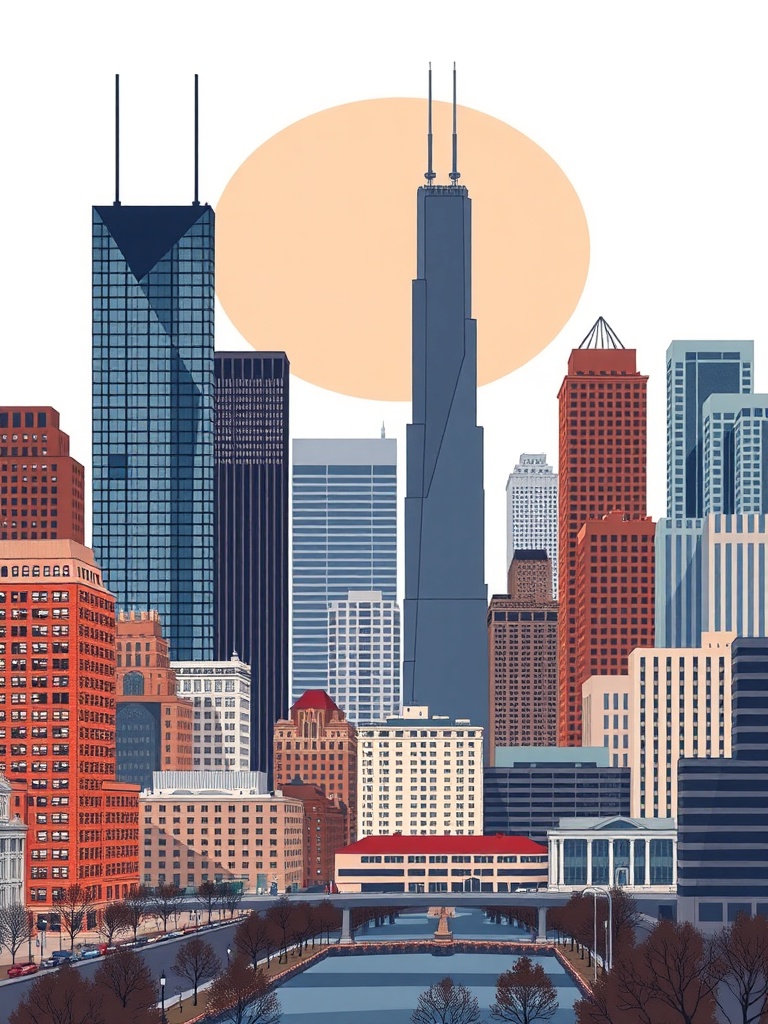Chicago pulses with a blend of bold architecture, lakefront energy, and a food scene that keeps redefining itself. Whether you’re a first-time visitor or a longtime local looking for fresh ideas, the city offers an easy mix of big attractions and neighborhood discoveries.
Why Chicago stands out
The skyline is a living gallery: iconic skyscrapers cluster along the lake, while the Chicago River slices through downtown, framed by architectural styles from the classic to the cutting-edge. Public spaces feel deliberate — parks, promenades, and cultural plazas invite people outside year-round, with programming that keeps neighborhoods lively and walkable.
Top things to do
– Architecture and river cruises: Guided boats on the river are the most accessible way to understand Chicago’s design legacy. Look for tours led by knowledgeable local guides who explain the interplay between form, function, and urban planning.
– Millennium Park and the Bean: A short walk from the river, this public plaza hosts concerts, art installations, and free programming.
It’s a great starting point for a downtown loop.
– Museum Mile and cultural institutions: From major museums to independent galleries, the city serves a deep appetite for art, history, and science. Check museum calendars for evening hours and special exhibitions.
– Lakefront Trail and beaches: The continuous waterfront trail runs for miles, connecting beaches, harbors, and parks. Renting a bike or taking a run along the lake is the best way to see the skyline from a different angle.
– Neighborhood explorations: Venture beyond downtown to find authentic food, street art, and local markets. Each neighborhood has a distinct personality — culinary destinations, live music scenes, and boutique shopping.
Food and drink
Dining in Chicago ranges from inventive tasting menus to classic comfort dishes. While famous deep-dish pizza remains a draw, the city’s culinary identity is broader and more experimental: elevated comfort food, international small plates, and a robust craft cocktail scene.
Neighborhood restaurants often offer exceptional value and creativity — look for chef-driven spots tucked into side streets.

Getting around
Public transit is efficient for most tourist routes. The elevated train system, known locally as the “L,” plus buses and commuter lines provide reliable access across neighborhoods. For shorter trips, bike-share programs and water taxis offer scenic alternatives.
Plan itineraries with transit maps to avoid peak commuting hours if you prefer quieter rides.
Practical tips
– Book popular activities in advance, especially architecture tours and major museum exhibitions.
– Dress in layers near the lake; the weather can shift quickly and breezes off the water cool downtown areas.
– Carry a small refillable water bottle — fountains and refill stations are widely available in parks and outposts.
– Explore neighborhoods by foot and save time for casual wandering. Some of the best finds are unexpected cafes, murals, and local markets.
Sustainability and access
The city has been expanding green infrastructure, improving pedestrian spaces, and investing in transit accessibility.
Many parks and cultural institutions offer accessible routes and programming, making it easier for diverse audiences to engage with what the city offers.
Final thought
Chicago rewards curiosity: a short architecture tour can lead to a hidden bakery in a residential block, and a lakefront bike ride can end at an unexpected music venue. Plan a mix of must-see landmarks and unplanned wandering to capture the city’s full flavor.